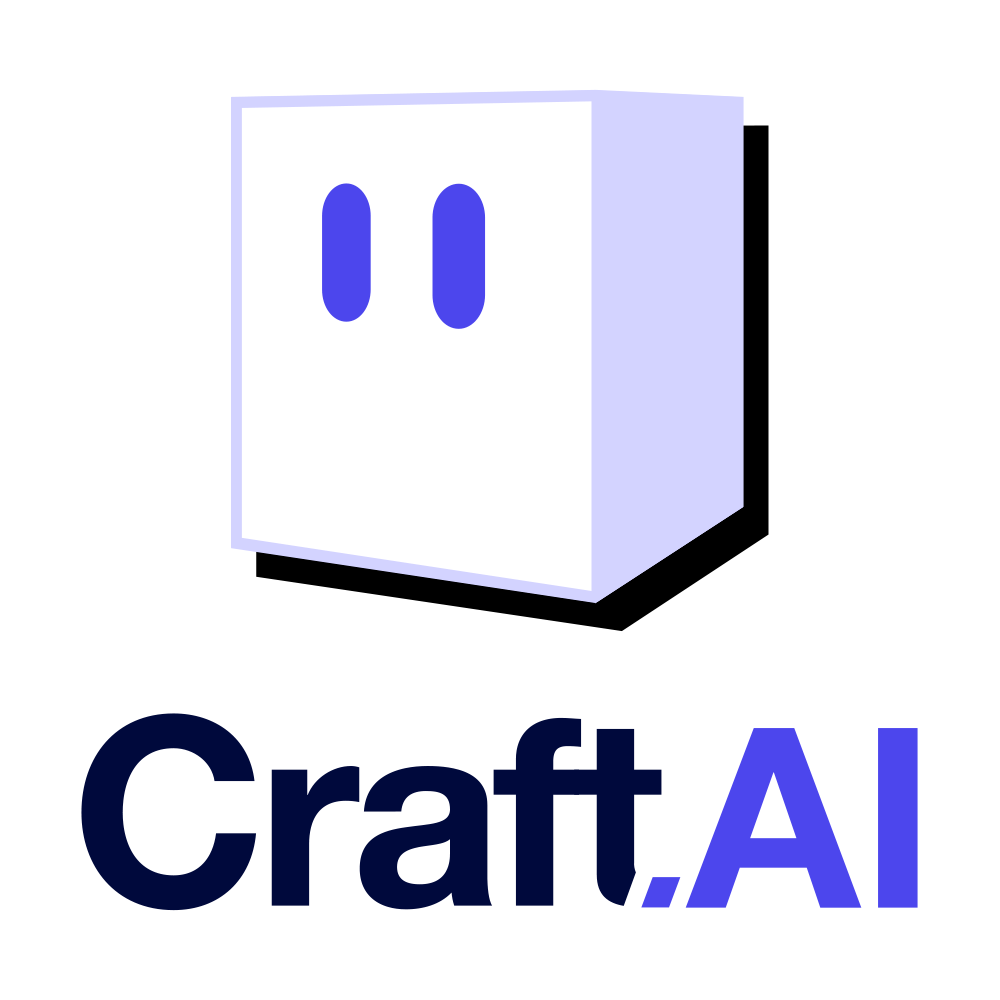UNIT 6: Creating a personal project using AI
Comprehensive Overview of How to Utilize AI in a Personal Passion Project

Unit Overview
Though everybody has passions, some struggle to transform them into project concepts. Artificial intelligence can assist by generating ideas stemming from an individual's interests. AI is proficient at taking diverse passions into unique proposals that prompt student creativity and interpretation. This unit builds on the knowledge gained in Units 1-5 by guiding learners to produce passion projects using AI. First, they must grasp effective techniques to initiate such endeavors - correctly blending their passions with AI's cooperative nature. The unit aims to empower students to identify and refine a topic while leveraging AI to enrich the project with data-driven insights. By the unit's end, they will have produced a meaningful concept fueled by their own curiosity and enriched by AI capabilities.

Discover Your Passion
Before starting a personal project, one must find their passion, which acts as the base of the entire project. This passion can stem from both throughlines and rabbit holes. Passion is entirely based on human emotion, and acts as a foundation that leads to project ideas that AI can assist with.



What are Throughlines?
A person's throughlines are the experiences they faced during childhood, and how certain childlike memories paved the way for an interest in complex fields such as engineering, medicine, philosophy, etc. Throughlines can be so simple, yet lead to complex projects and interests that can influence a person for the rest of their lives. One of the most common throughlines that engineers and architects recall is their love for building blocks and legos at a young age. Another common throughline that actors and directors recall is their passion for film and how it evolved as they grew up.
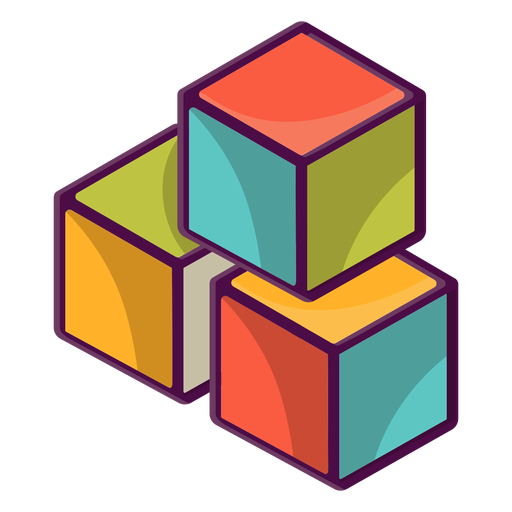
Rabbit holes are found when one becomes entranced with specific topics and issues that have the potential to be solved or highlighted through a project. These topics that cause fascination can be anything, stemming from social media, education, sports, or anything. They can even be discovered in the matter of one night. One may stumble down a rabbit hole of countless videos or articles explaining the salaries of soccer players, leading to a fully constructed project that highlights the problem of sovereign wealth in sports.
Building Up On Your Passions
After finding a certain passion, a personal project should follow a set of guidelines--or a TOAST, beginning with transparency. This should answer the problem that needs to be solved or addressed by the project's intent. For example, if I were creating a project about the impacts of sovereign wealth in fútbol, I would identify the problem of political, economic, and authoritarian interference in sports. Next is Opportunity, answering how one's idea relates to the identified problem. After opportunity, Analysis and Strategy are used. Analysis requires research that stands out from other sources on the Internet to add a unique spin to your project. Strategy refers to the resources used in the project. Referring to our example, I could use Opportunity, Analysis, and Strategy by highlighting political and economic interferences through providing timelines, graphs, and salary data that all tie back to the main issue. Finally, after a personal project is completed, Transformation is found. Transformation defines the meaning of success for the project and how the project will leave an impact. Transformation is a very abstract concept and may not be as clear-cut in some projects involving ongoing issues.
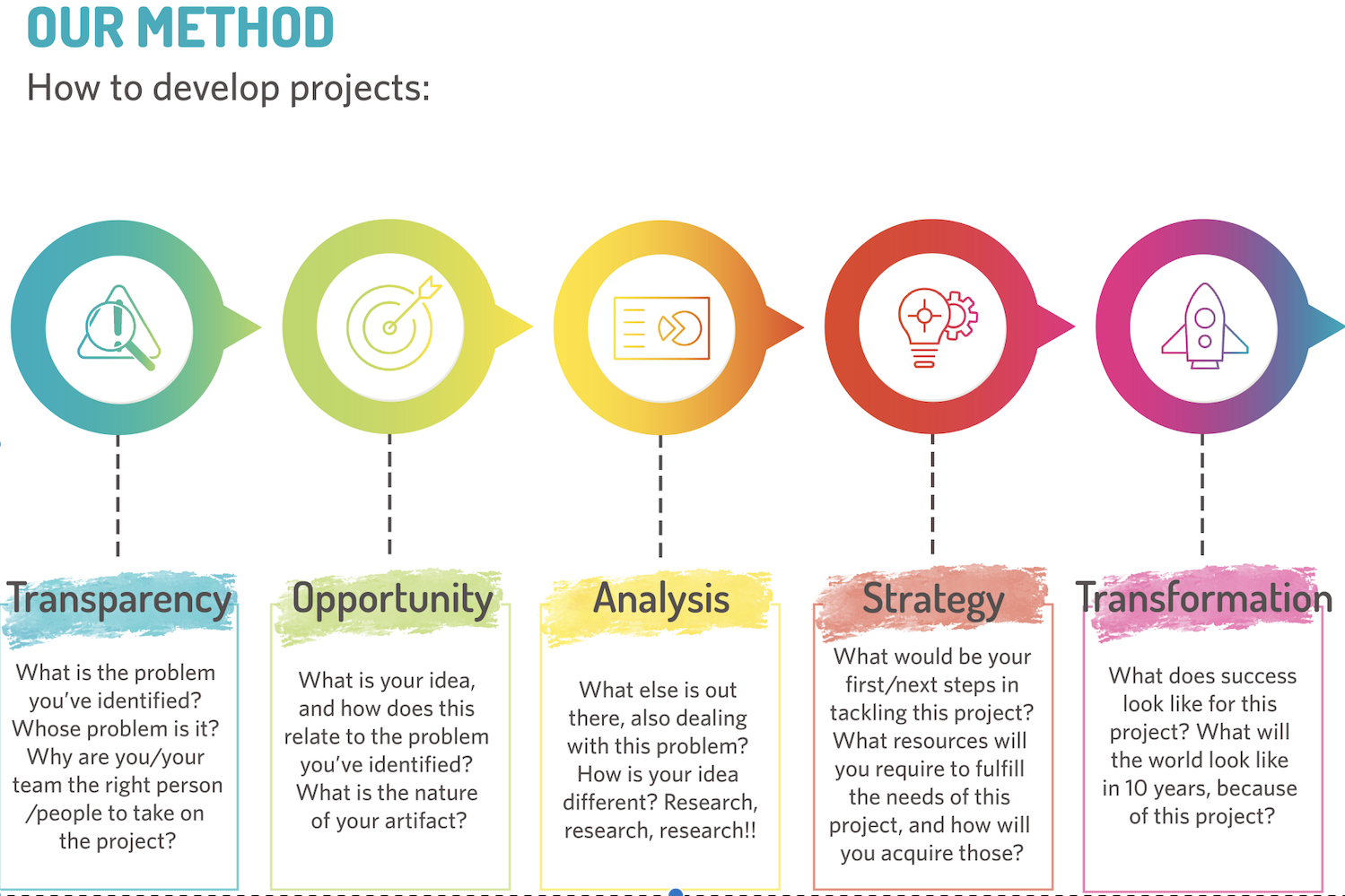
How can AI help people identify and pursue their passions over time?
AI chatbots like ChatGPT and Claude can help students find passion projects by generating rabbit holes of ideas to explore. The bots provide research avenues and rabbit holes to unpack interests, leading to an identified passion area. Once a focused topic is chosen, the TOAST framework can support deep analysis of that singular passion project.

Project Assistance Scenario #1: How to jumpstart a project
In this scenario, I am a high school student interested in majoring in Cognitive Science. Despite my interest in the major due to it's variety of disciplines, I am overwhelmed by topics left and right that I cannot find a specific passion, issue, or idea to focus on. So, I ask Claude A.I. for help on this matter.
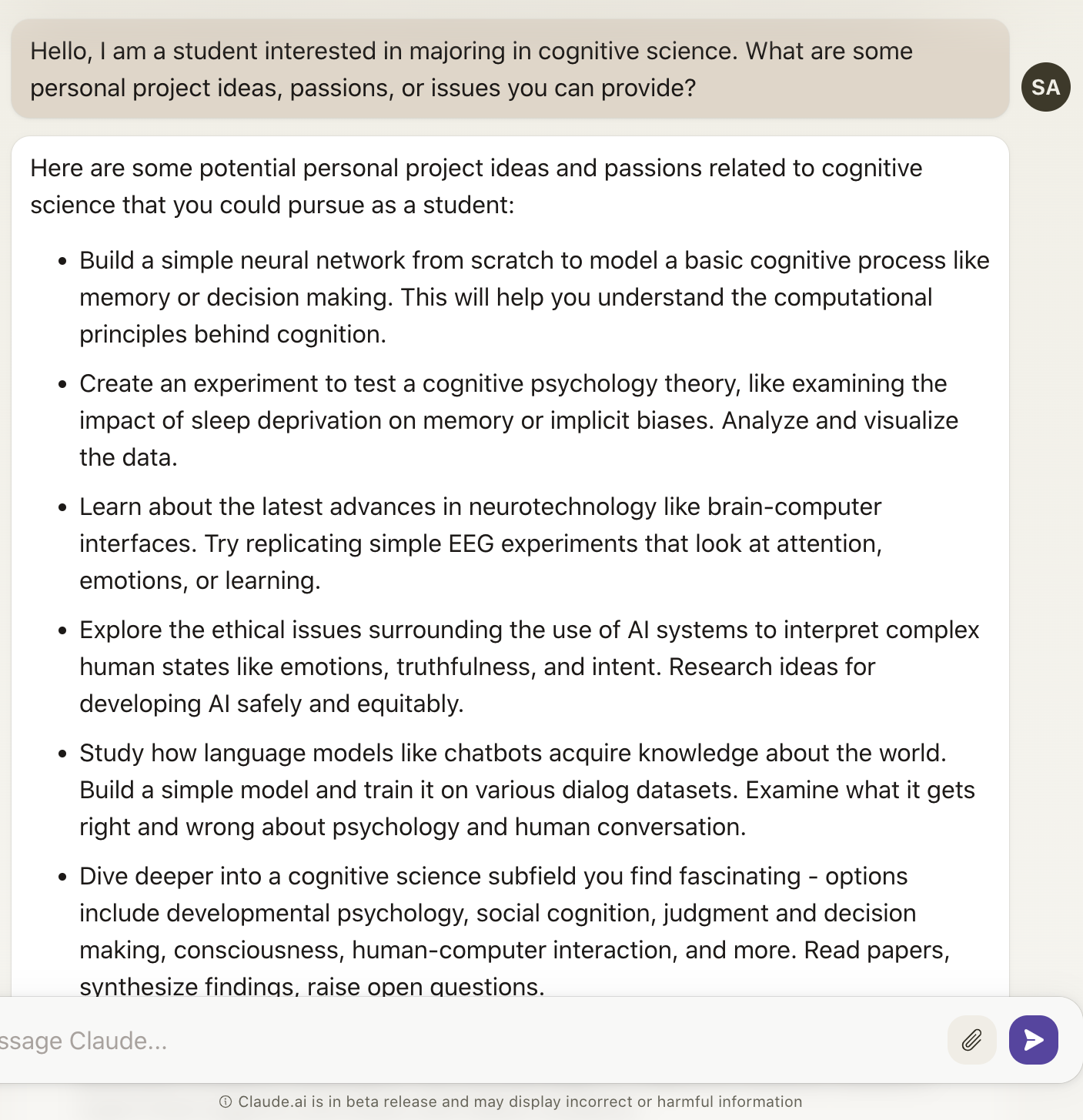
As you can see, Claude generated six different ideas, giving me a narrowed down list of specific ideas that I can choose from. Out of this list, I begin getting interested in the fifth bullet point because it reminded me of my curiosities caused by previous rabbit holes of how human languages came to be and how people can communicate through language barriers. I ask Claude to go in-depth on the fifth bullet point.
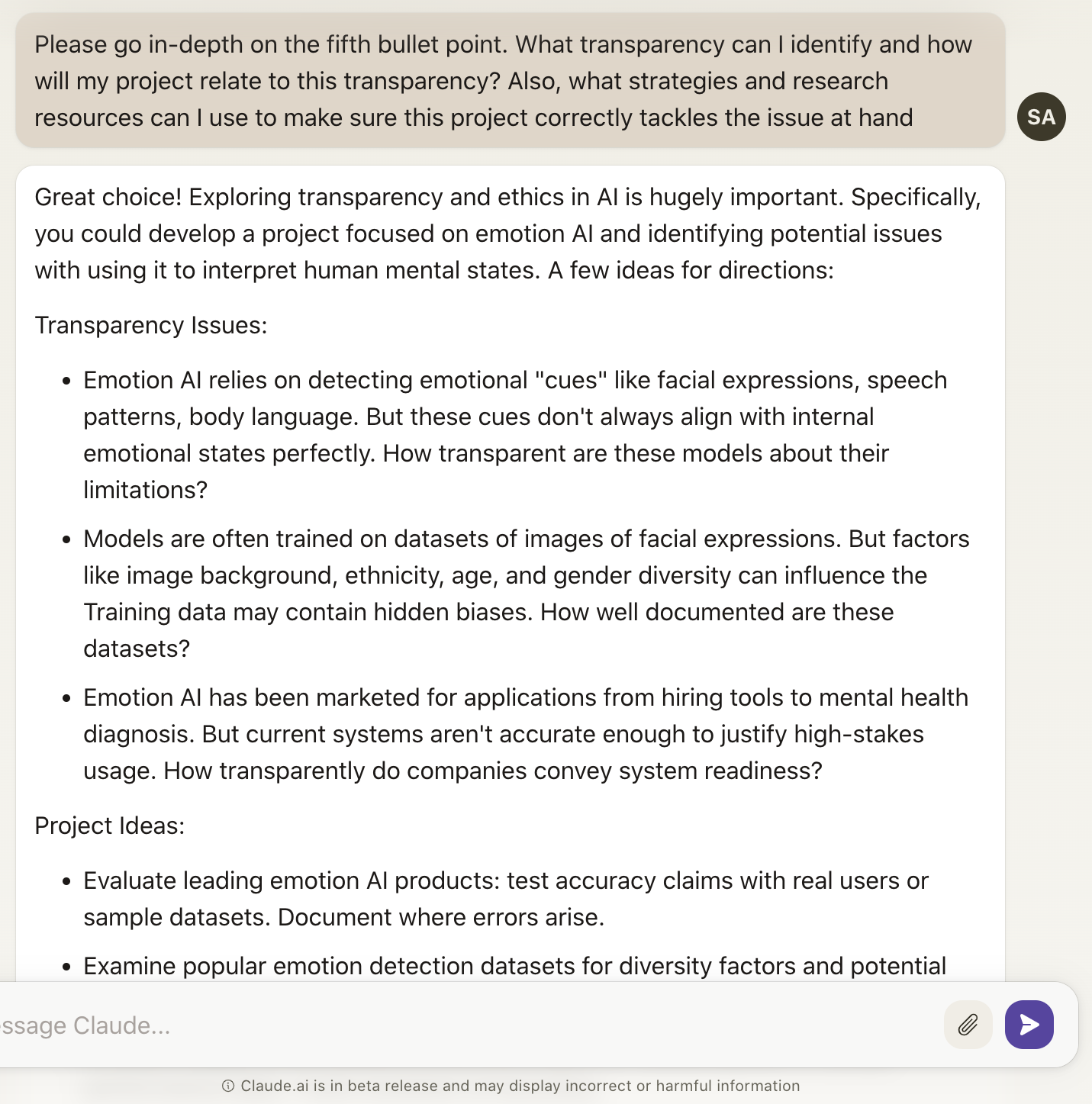
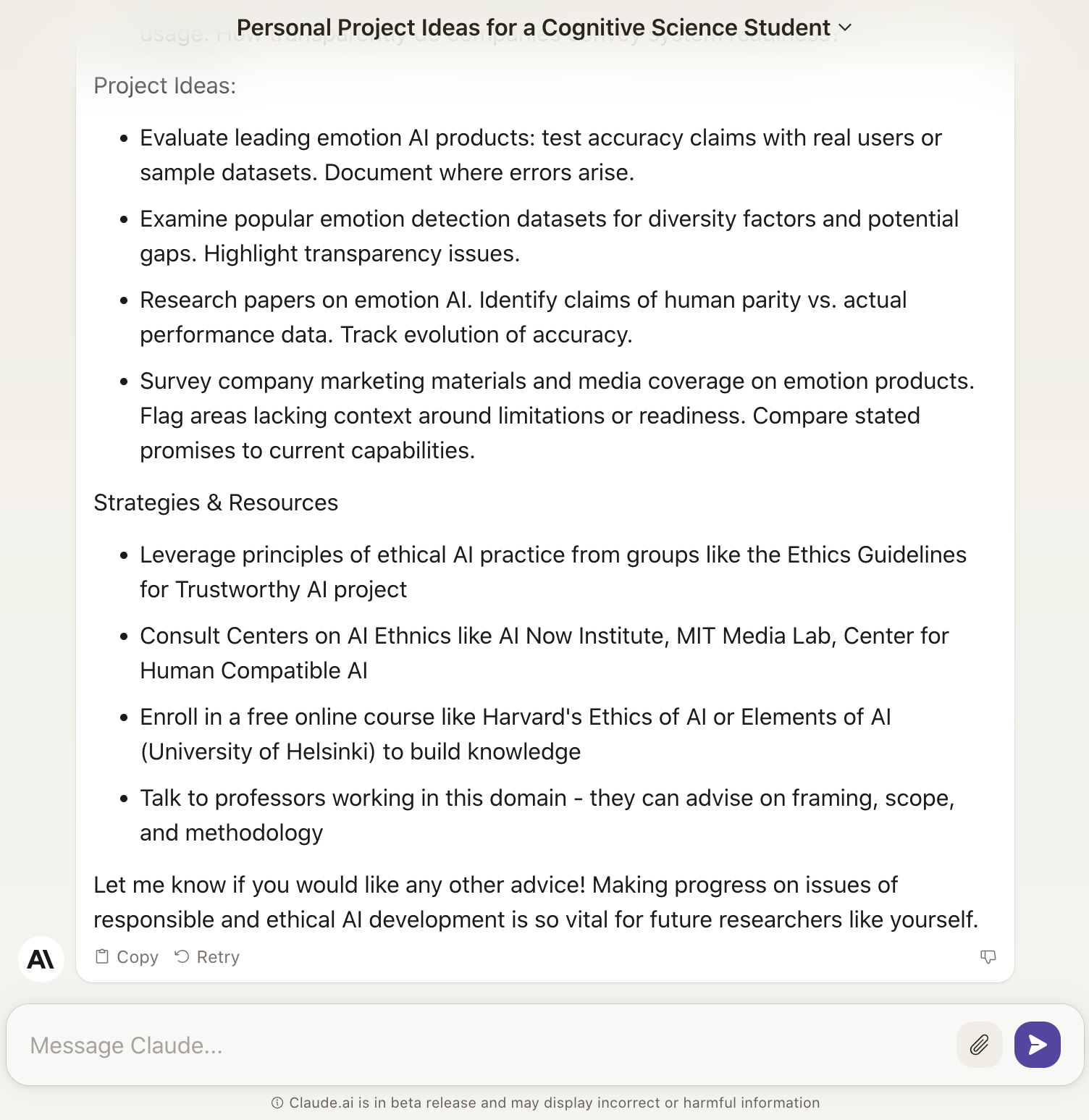
Thanks to Claude's assistance, three transparency issues, four project ideas, and four strategies were generated. From these lists, I can further ask the chatbot questions until it narrows down to one singular idea with a concrete transparency and strategy.
The scenario is proof that artificial intelligence can help throw out ideas and narrow down the process of project ideation to help students jumpstart a passion project.
How can AI be utilized during passion projects for statistical analysis and data analysis in a passion project?
Artificial intelligence can do more than just give a student ideas, it can always be a presence while a project is unfolding. AI can be one of the strategies in the Strategy part of a TOAST while also aiding the Analysis process by providing information and numerical data that help make a project stand out.
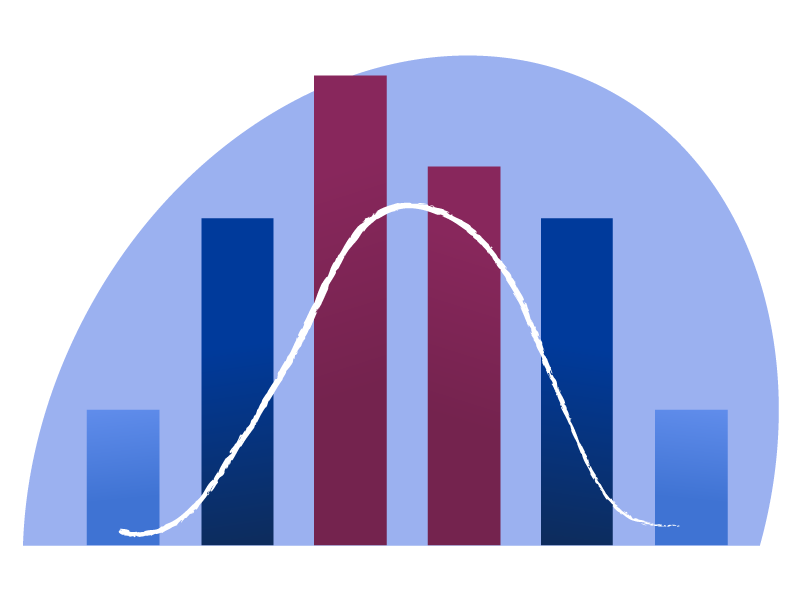
Project Assistance Scenario #2: How A.I. can help during a project
In this scenario, I am a high school student interested in majoring in architecture with a focus on environmental science. I am currently doing a project highlighting the benefits of sustainable architecture and how the implementation of architecture involving green roofs and cool roofs can soon lead to cities with negative carbon footprints. I have knowledge on green roofs and have already referenced an extensive amount of websites, but I have not been able to find information on sustainable architecture such as cool roofs, brown roofs, sustainable parking lots, and sponge cities. So, I ask Claude for help on my research.
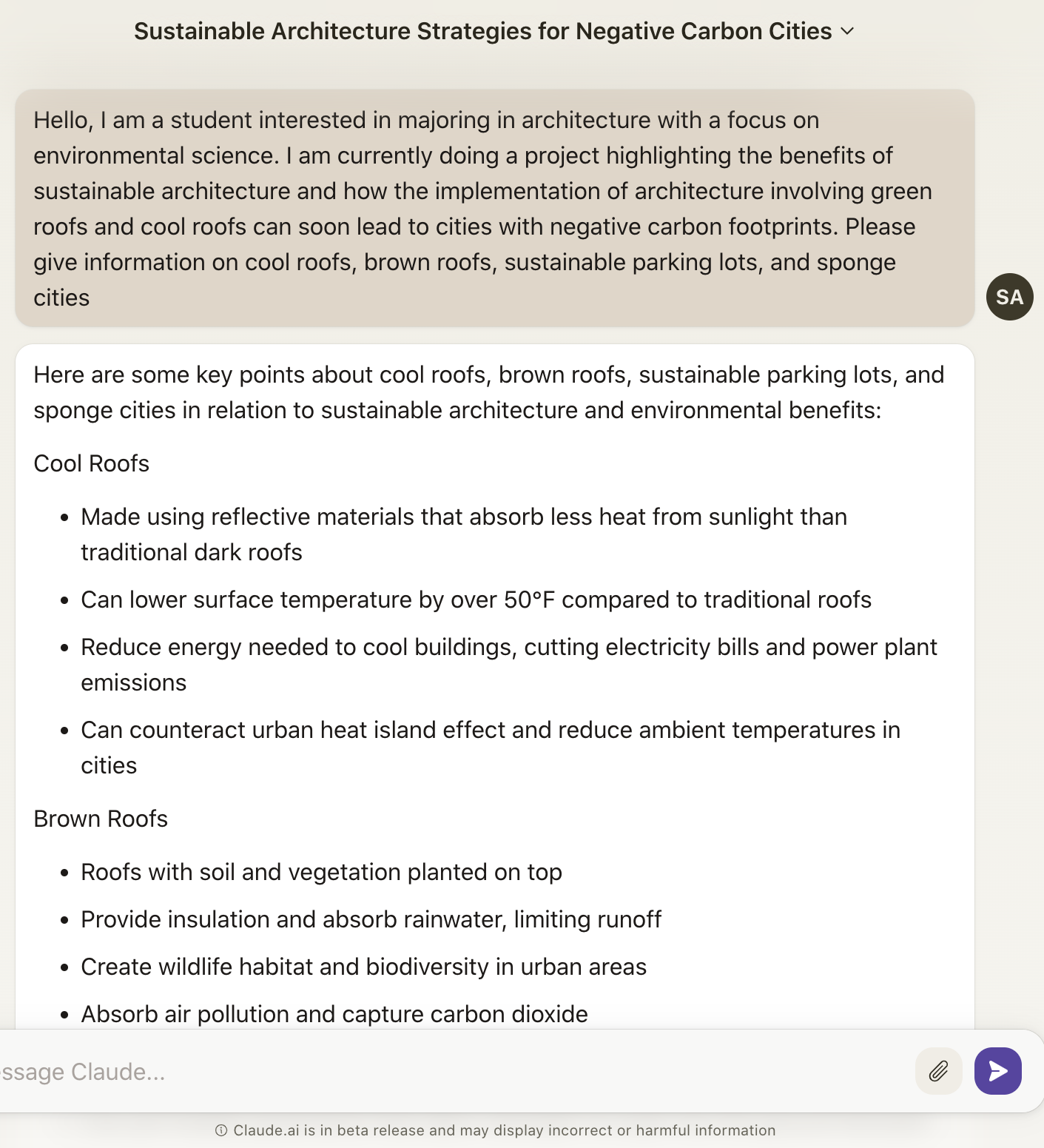
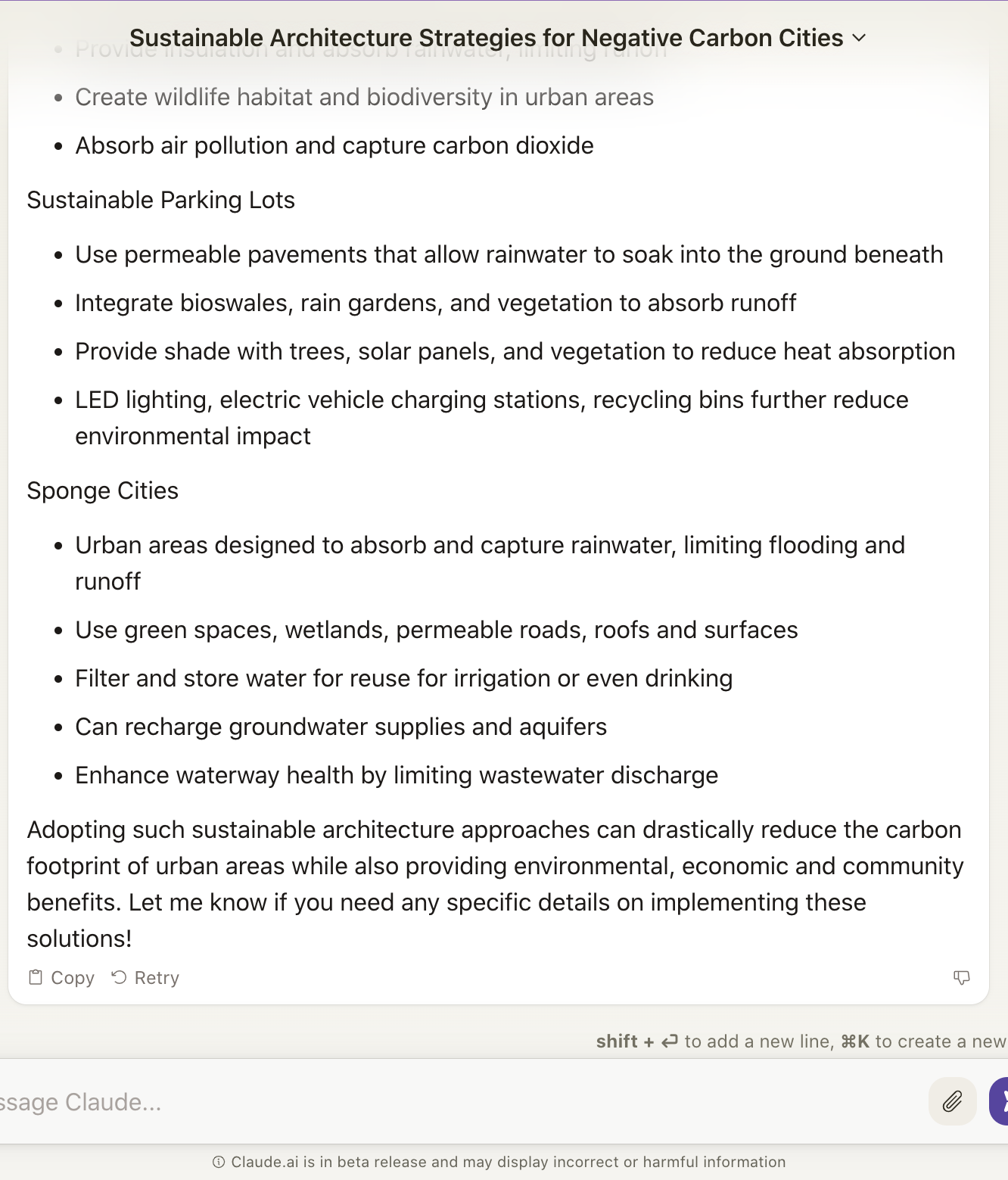
From Claude, I now have thorough information of all the desired architecture choices that I want to include in my project. I have four bullet points of information for cool roofs, brown roofs, and sustainable parking lots, while I have five bullet points of information for sponge cities. From the bullet points given, I could use the same method of narrowing that was used in scenario one and ask the chatbot to go in-depth on each point to gain even more information. The information obtained through this process of interacting with the AI will develop a strengthened analysis and strategy in the project.
I soon realize that my information is lacking numerical data about the benefits of sustainable technology. I ask Claude to find numerical data that I can potentially use to make graphs, charts, and spreadsheets.
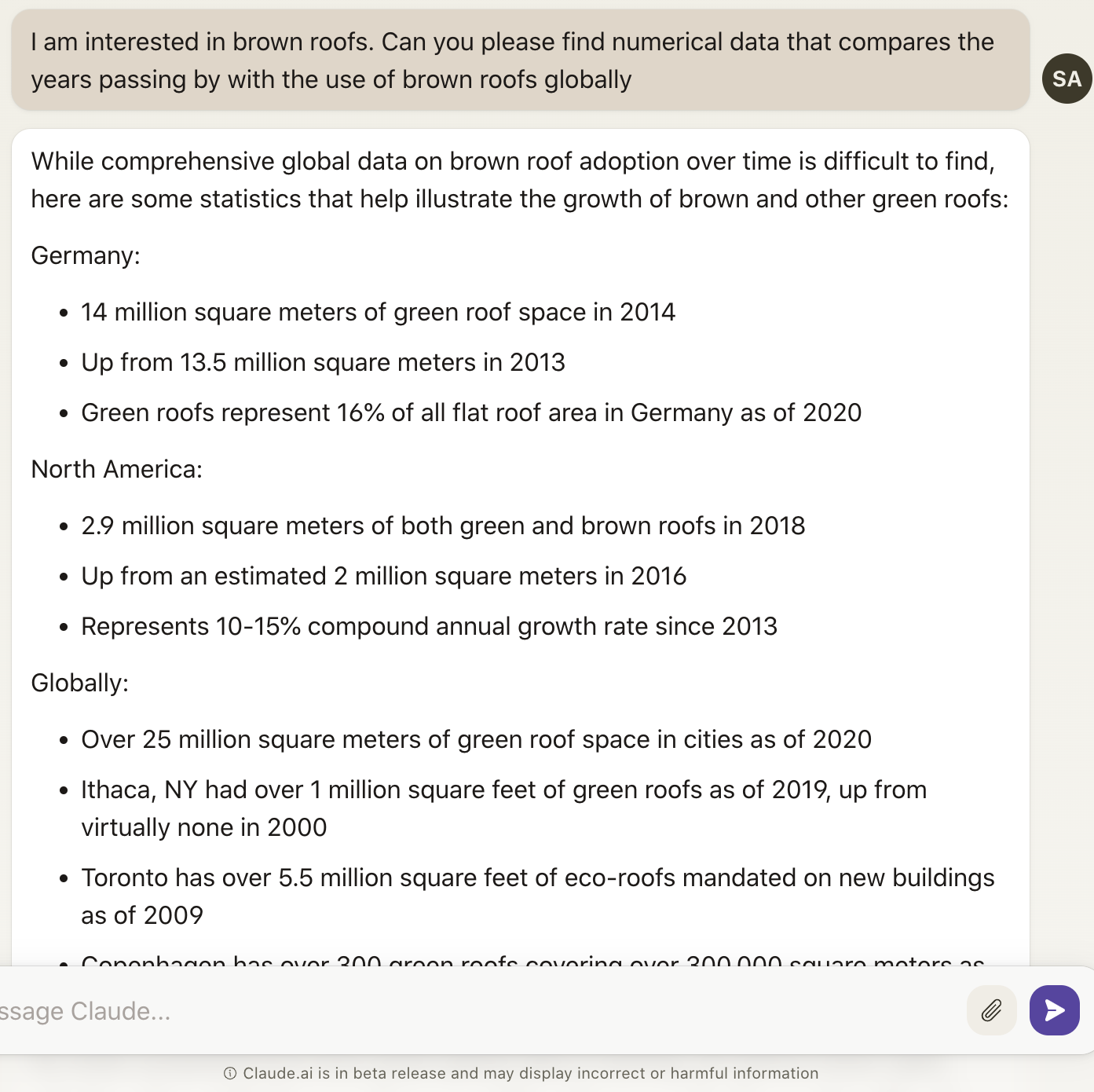
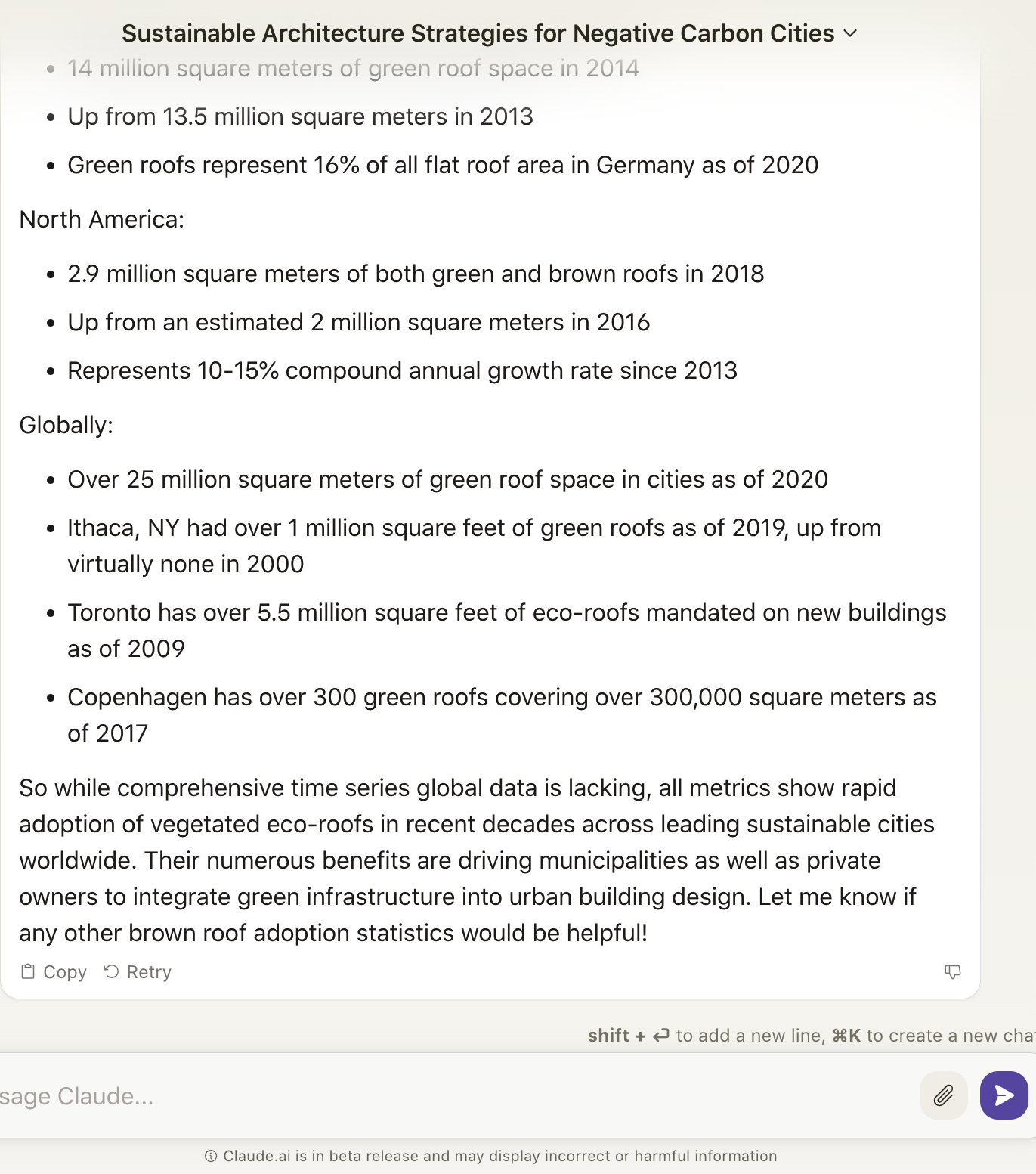
Claude has provided me helpful numerical data that includes different locations and their square meters of green roof space, annual growth rates, years when the data was recorded, and increase in square meters from previous years. From this data that AI has given me, I can continue the analysis and strategy phases of my project by making graphs and spreadsheets using softwares such as Excel.
A.I-Integrated Project Examples
Impact of Sovereign Wealth: Used ChatGPT's Data Analysis to create line graphs of thousands of data points over the span of two decades
Phage Out: Used Claude AI to summarize difficult medical research and ChatGPT for medical information
Useful Tools in Project-Building
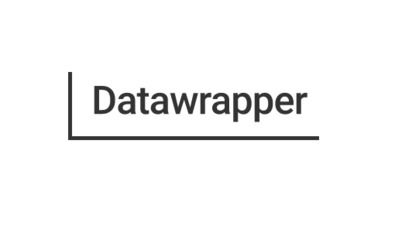


Conclusion
Using throughlines and rabbit holes can guide students to develop passion projects reflecting the TOAST framework. AI chatbots like Claude assist by identifying topics matching student interests. These bots rapidly generate ideas and information to facilitate project brainstorming. Students can then use AI abilities like data analysis and graphing to add depth and creativity. While AI provides invaluable insights and help, room remains for human originality and passion. Overall, AI is a powerful complement that aids, but does not replace, meaningful student work driven by interests and positive impact. As AI progresses, throughlines, rabbit holes, and TOAST will be further supplemented by AI capabilities that empower student passion projects aligned with their goals.

